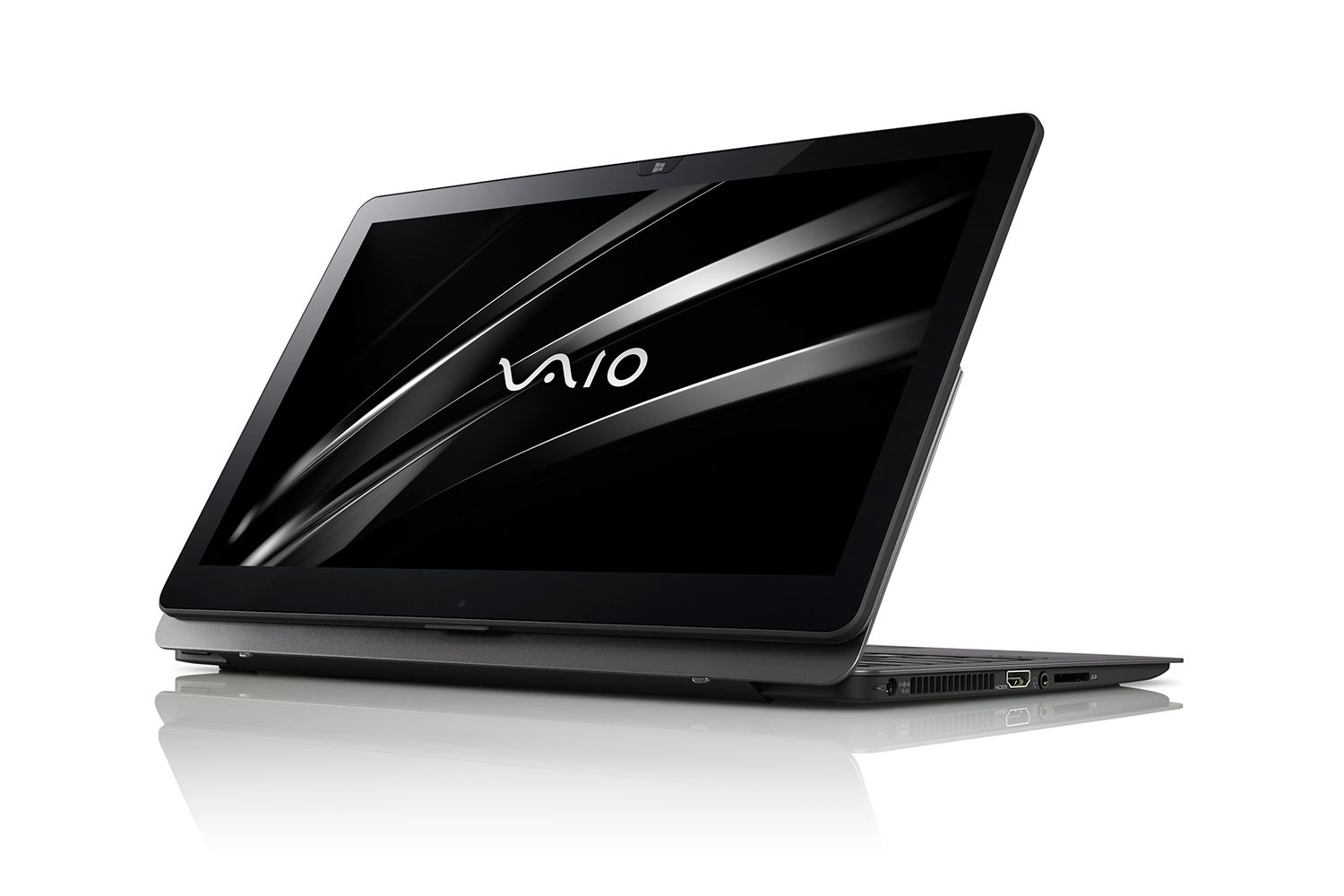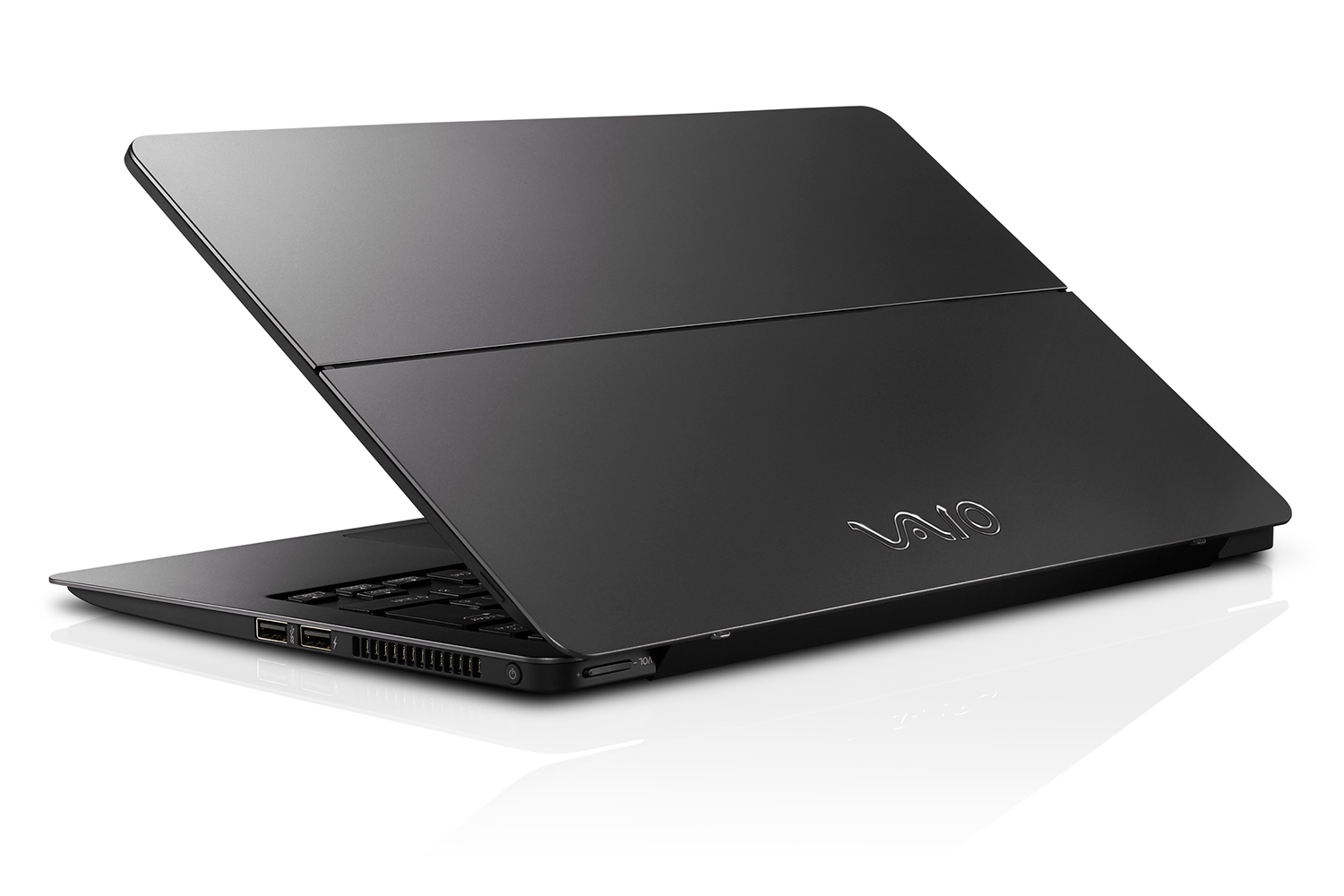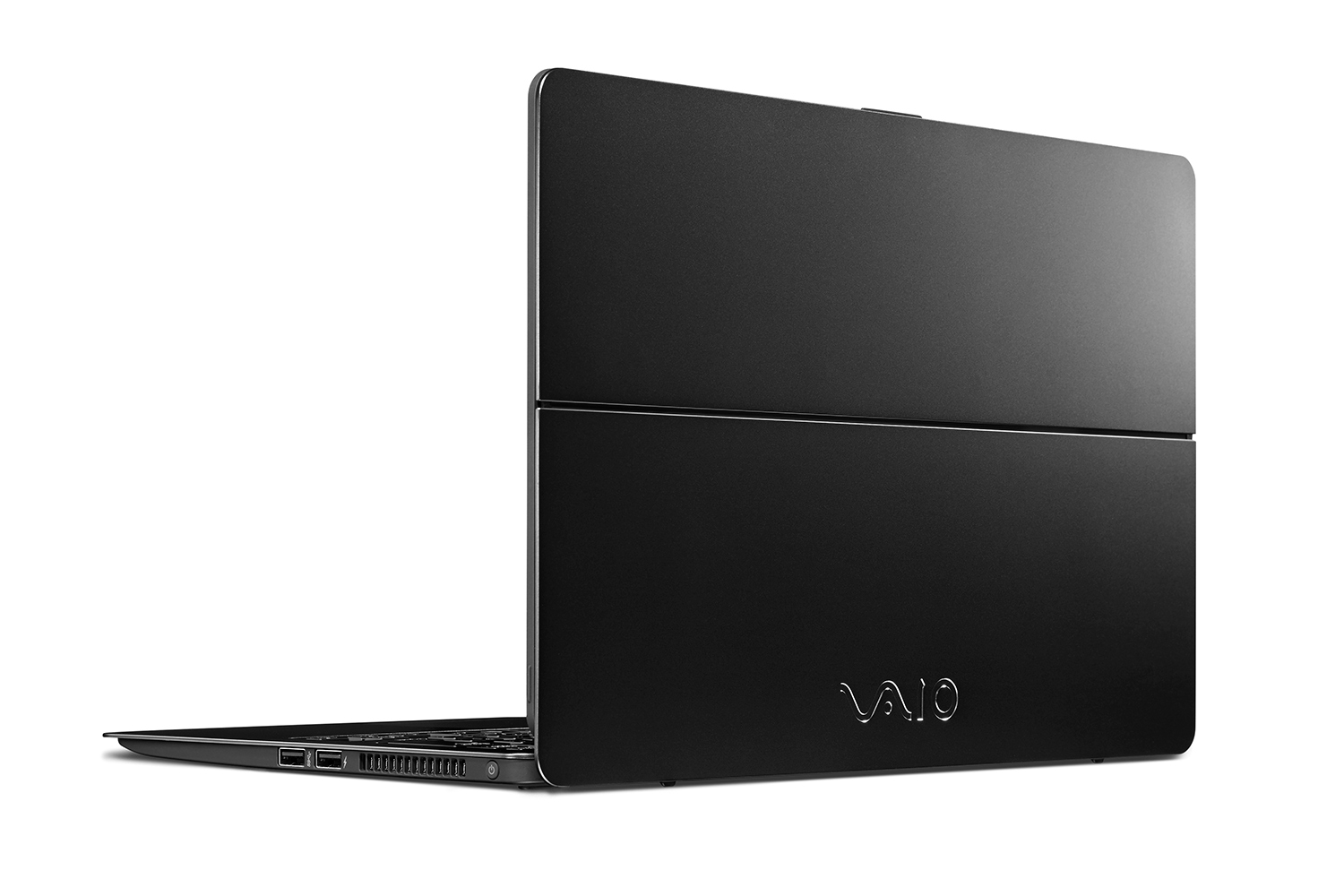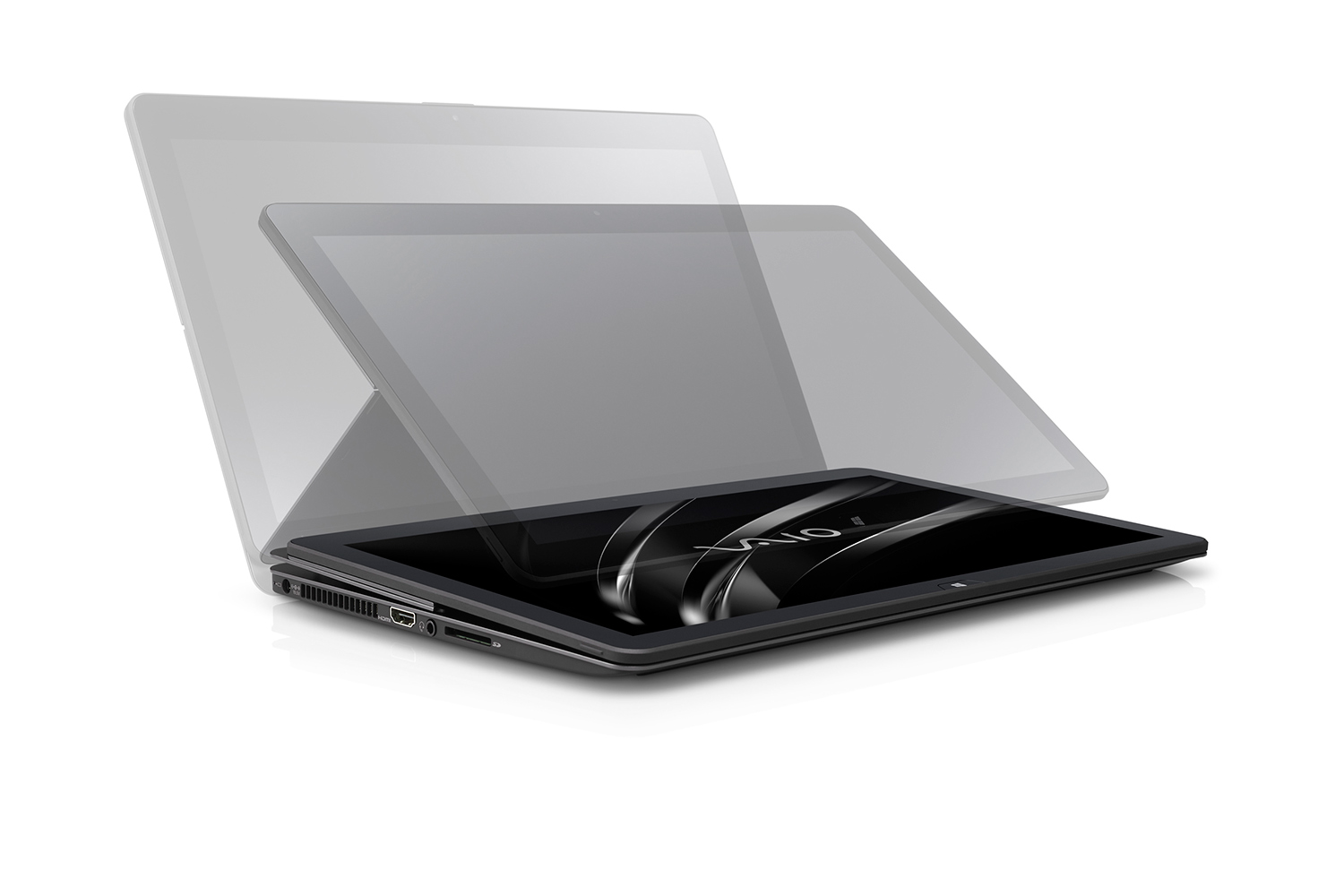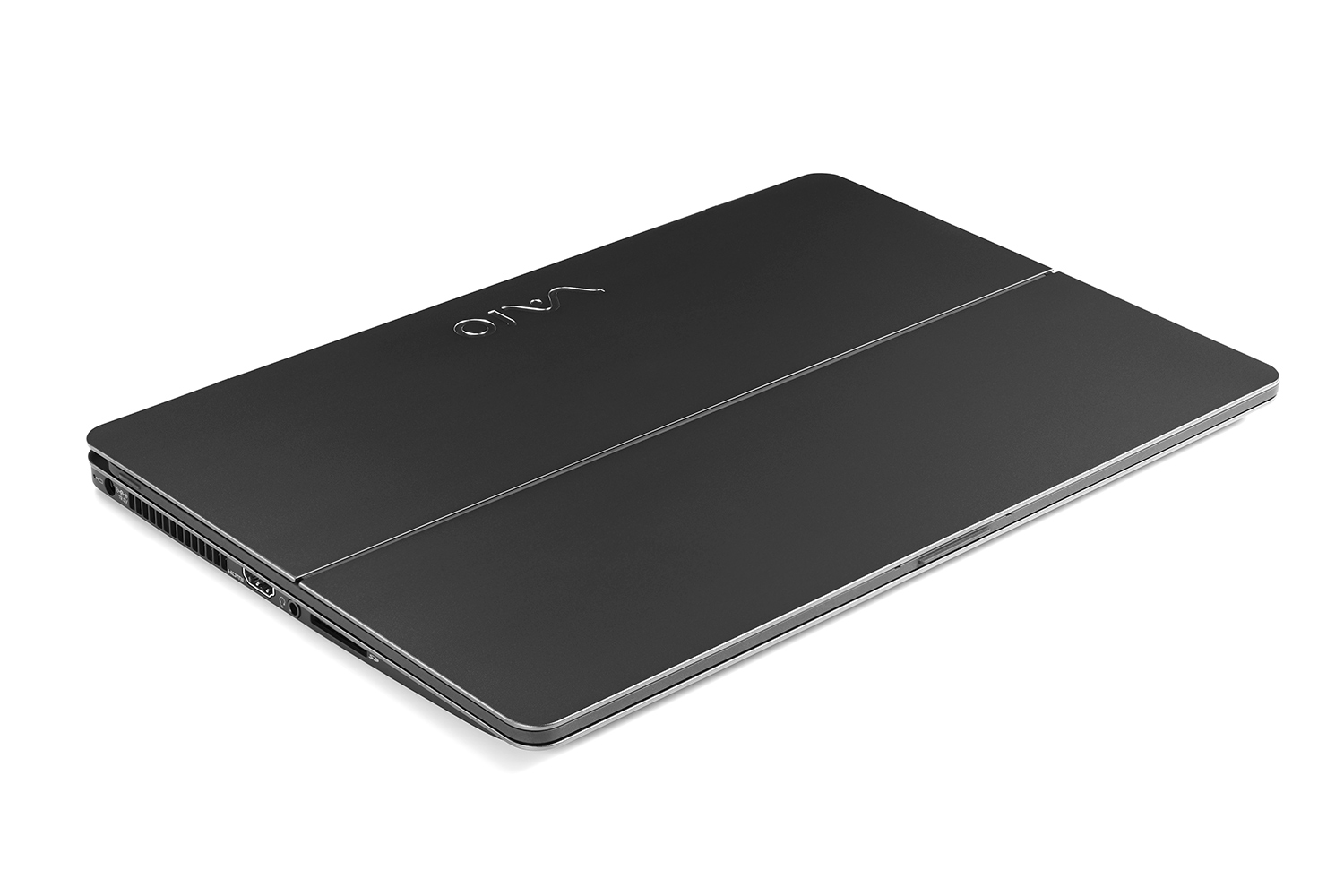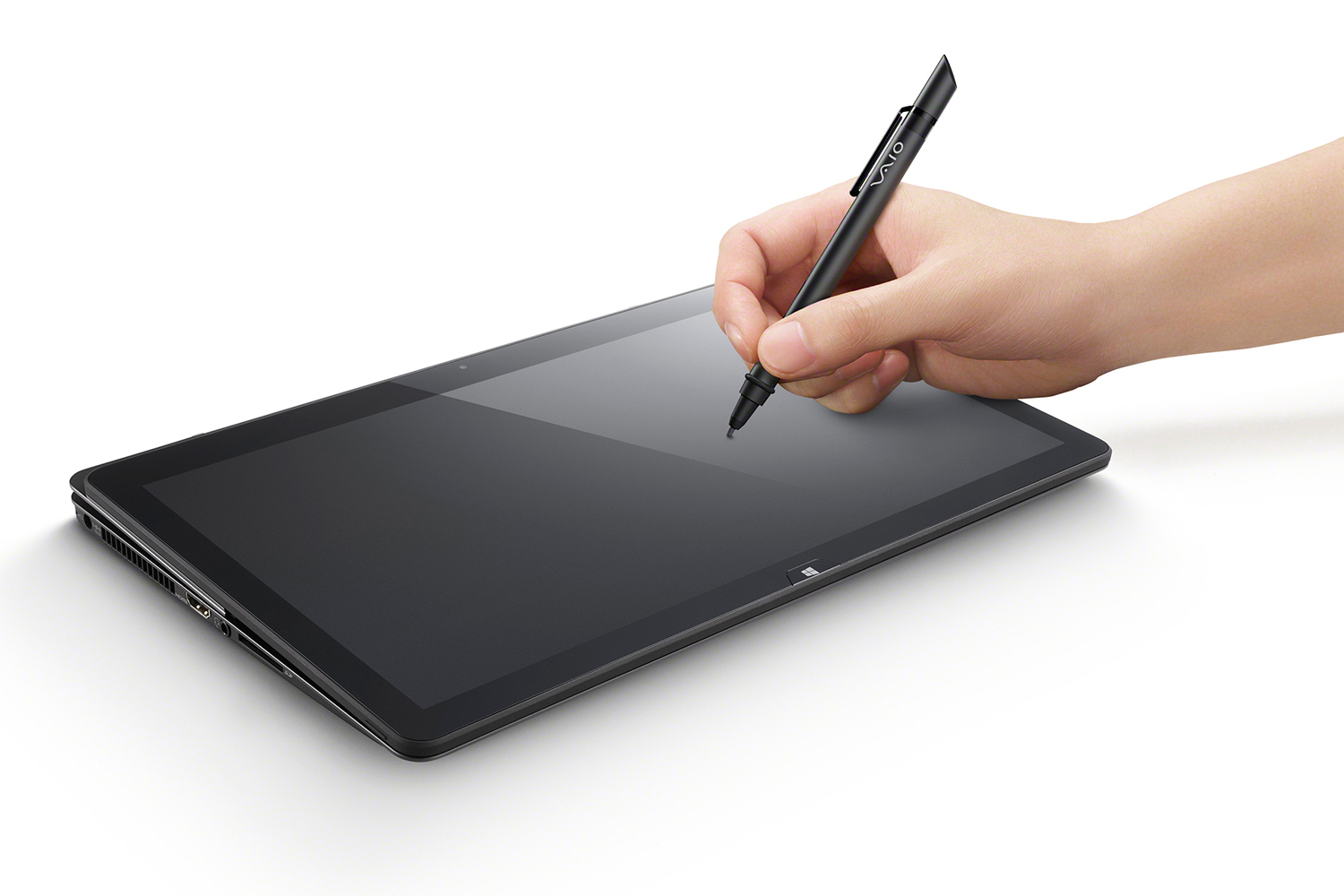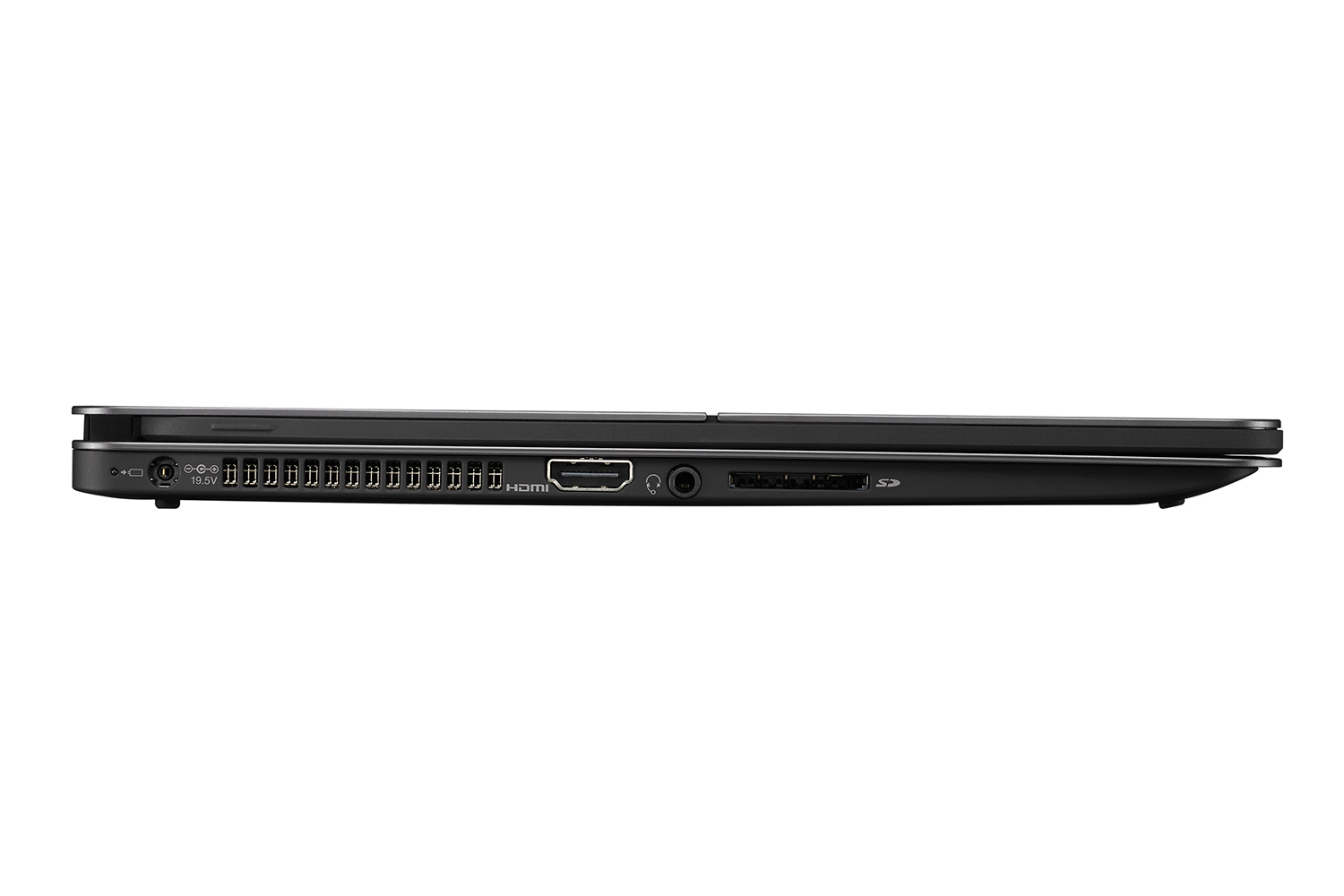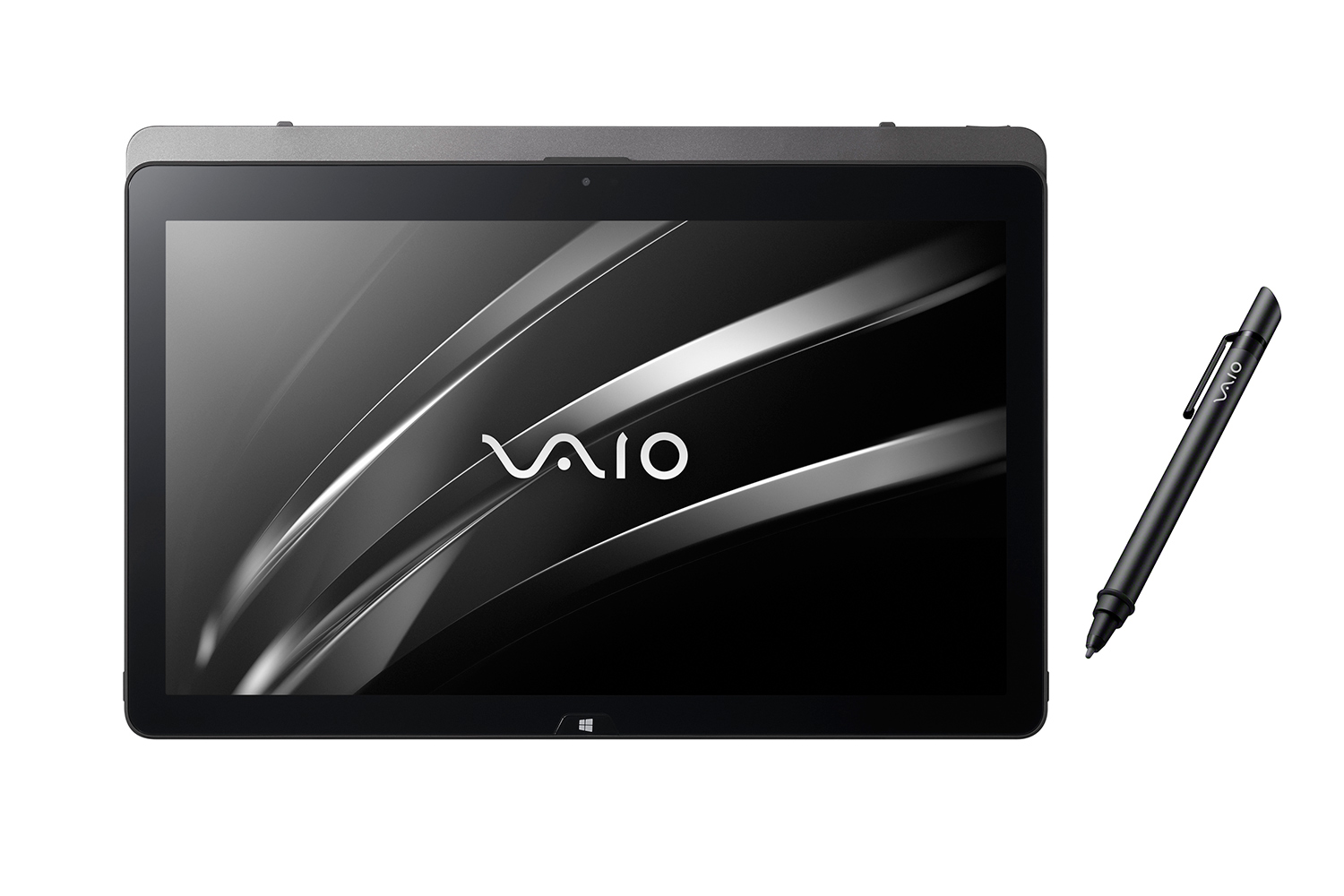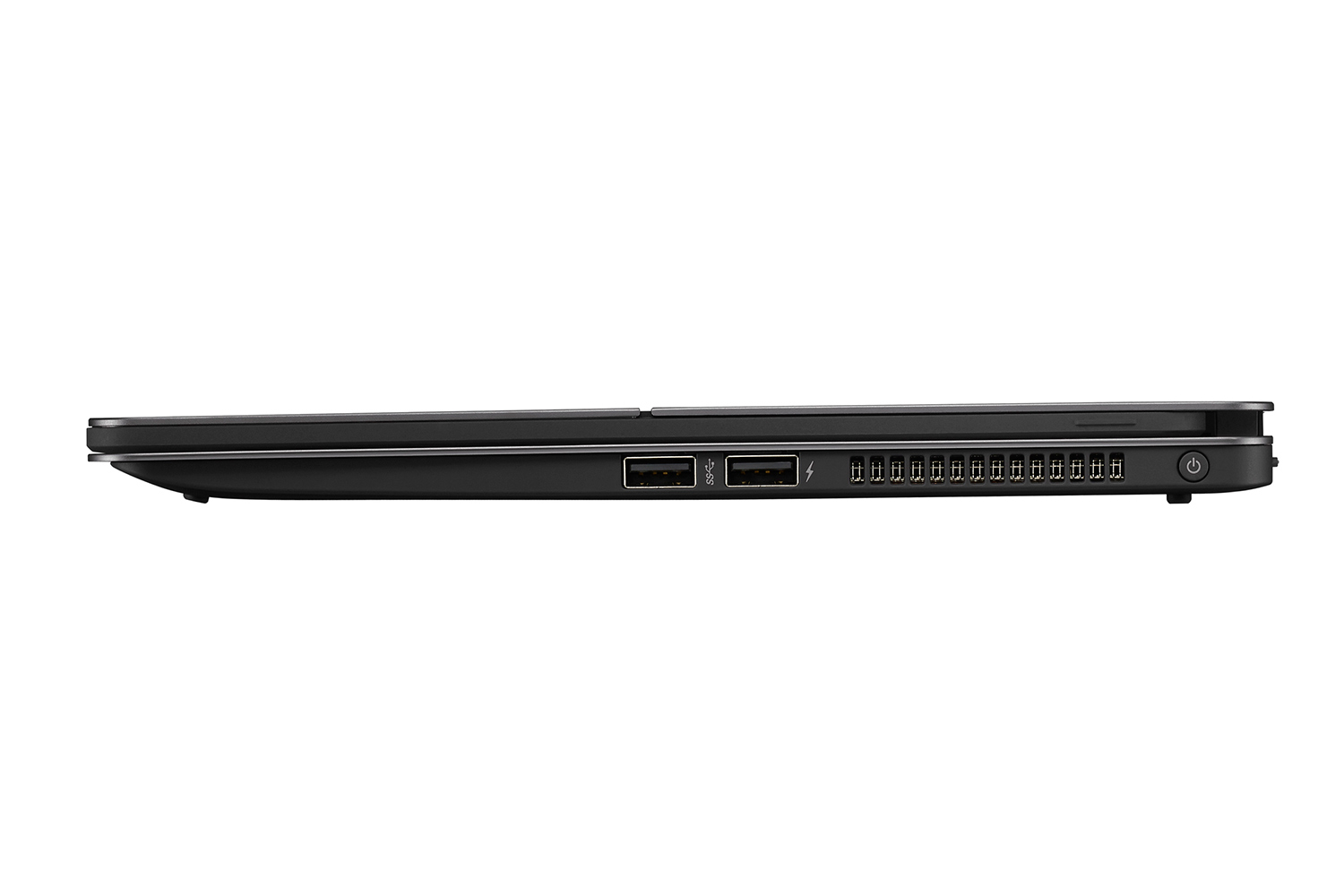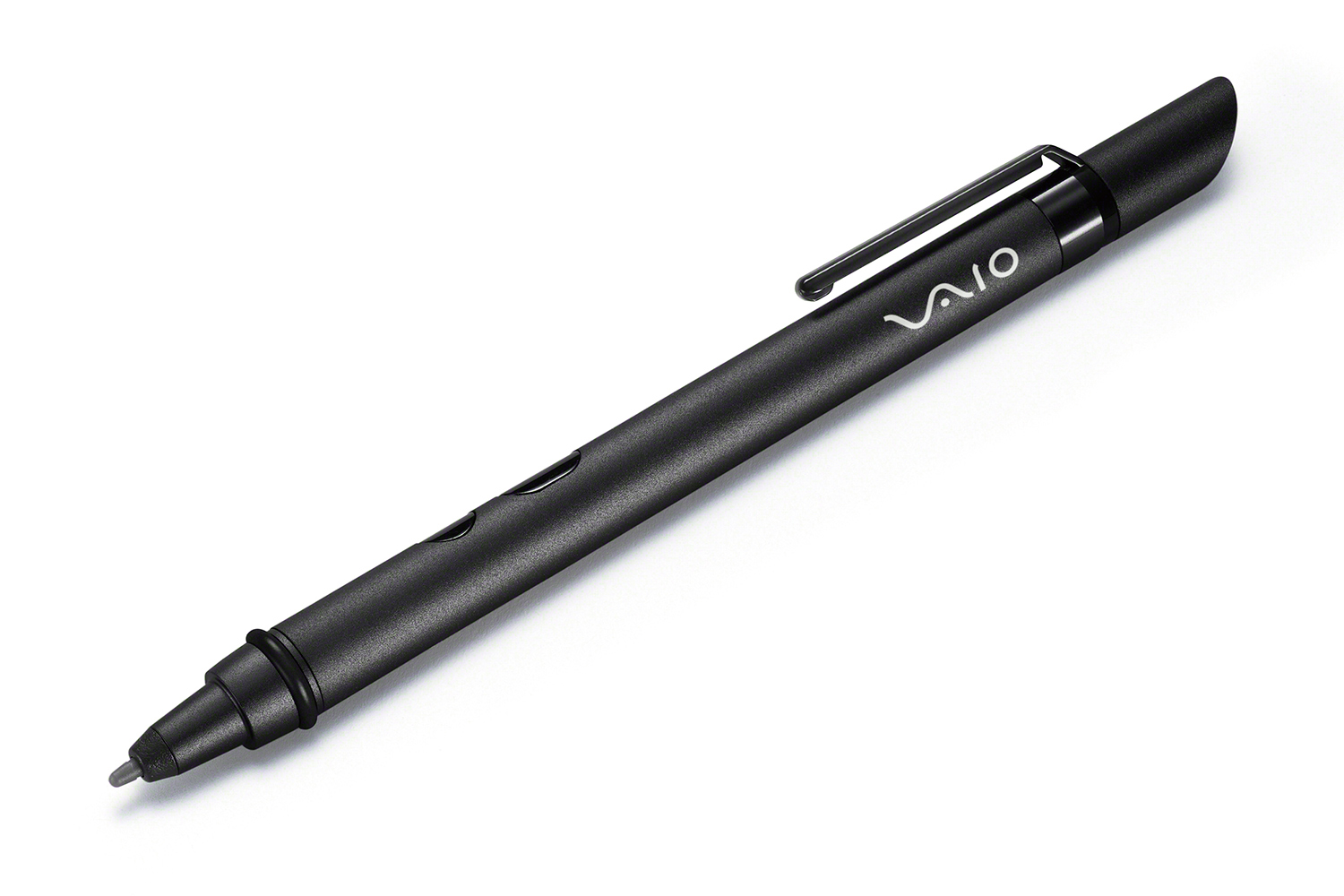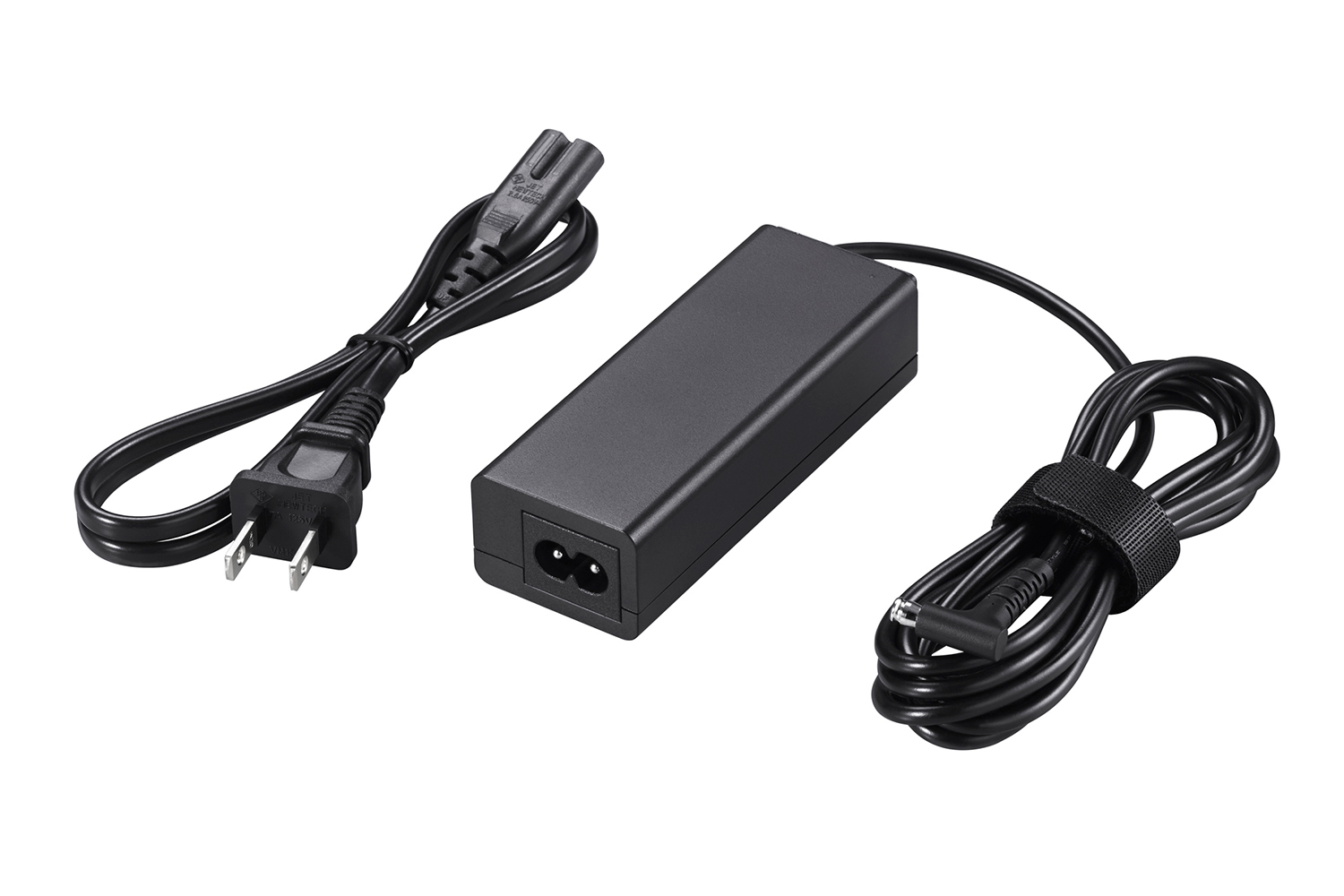The Vaio Z will enter the 2-in-1 market in style.
The Vaio Z Series is an ultra-premium convertible laptop built for the executive set, made to turn a man of business into a businessman. Carrying on the legacy of the Vaio name that became popular under Sony, the flagship device of the newly independent brand’s western debut gambles hard on quality and luxury to entice high-end buyers.
And there’s a chance Vaio could actually pull it off.
Though we had limited time with a pre-production unit, the build quality of the Vaio Z was impressive. Its compact, squared-off construction gives the new Z an illusion of heft. Well, more than an illusion — at 2.9 pounds, it’s on the heavy end compared to laptops in its class, though only by a few tenths of a pound. The metallic chassis looks dense at first glance, but a smooth aluminum top and carbon bottom keep weight within reason.
The Z can equip a display with resolution up to 2,560 x 1,440, and the company promise full reproduction of the sRGB color gamut. Though the screen showed sharp contrast and great detail, the display didn’t necessarily elicit the kind of eye-popping response you’d expect from a machine of this caliber.
Rather than using a main hinge that bends 360 degrees, the Z features a hinge attached to a half-sized back panel, clearly noted by a dark gap in the top-panel’s mid-section. The display folds over the keyboard to convert the device into a tablet, a design Vaio is calling the “flip mechanism.” When converting from standard laptop to presentation (screen on the back) and tablet modes, the screen felt secure. While it has a physical lock to hold it in place in laptop mode, a pair of magnets on the top and bottom of the screen make the display feel “locked in” regardless of how it’s being used.
The Z stylus, which comes included, feels well-weighted and sports left-and right-click buttons for more productive touch-based tasks. Unfortunately, there’s no built-in compartment for it, which dramatically decreases the chance most users will have it on them when they need it.
Vaio has managed to find materials and features to make every aspect of the device appear “premium,” and worth showing off. The keys, which have been “sound-tuned” to cut the annoying high-end out of a keyboard’s clack, seem refined and pleasing to use. The keys also have a smudge-proof coating that keeps them looking fresh. The touchpad, which felt responsive and accurate, is made of mica, though I’m not sure how specifically the material improved the experience.
The Z has materials and features that make every aspect of the device feel premium.
The Z has an 8-megapixel camera on the bottom of the device for taking document-sized photos. Combined with Vaio’s “CamScanner” software is meant to approximate a digital scanner that allows users to photograph a piece of paper and immediately start writing on it. Though we did not get to test it, it isn’t hard to see how one would flip the Z into tablet mode, line the camera up above a piece of paper so the document filled the screen, then snap a shot. It seems useful, though many smartphones already can do the same, and are easier to hold above a document.
Of course, exterior feel and features are only half the battle. What’s under the hood will determine if the Vaio is a premium machine. With an $1800 price tag, the Z will be forced to prove its worth against best-in-class laptops, such as the Macbook Pro 13 and Dell XPS 13. Fortunately, the VAIO Z will have top of the line components, including a 28-watt Intel Skylake i5 or i7 processor, 8 to 16GB of RAM, and a solid state drives that connect over the NVMe standard. These components should let the Z rank among the top performers in its category.
An entry-level laptop version of the Z, without the touchscreen and flipping hinge, will also be available, starting at $1,500. The model without a touchscreen sports a lower resolution 1080p display, though 2,560 x 1,440 will be optional. Although removing the display drops the weight down to 2.56 lbs, the clamshell model did not feel dramatically different in hand compared to the convertible model.
The Z also sports a custom chipset configuration, which Vaio refers to as the “Z-engine,” a “high-density” logic board configuration that frees up space for a larger battery and fan. According to Vaio, that extra room should translate to a large battery, and that means the device will have up to 11.5 hours of battery life. Vaio said the model without a touchscreen, because it still features a Z-engine configuration and doesn’t need expend additional processing power for touchscreen, should last for up to a record-shattering 15.5 hours. While convertible viewing options and a touchscreen theoretically make the Z a more versatile, one-man-army of a device, an equally powerful laptop with super-charged battery life might make the less expensive model the better choice for power users.
What will make or break this device is its design, and more specifically, how enjoyable it is to use as both laptop and tablet. The Vaio Z seems poised to excel as a luxury object, regardless of whether or not it’s the best laptop on the market, but its price tag will certainly demand a high standard. Surprisingly, our first impressive lead us to think Vaio might actually leap that high bar – an unexpected outcome, given the Z will be the company’s debut in North America.
Highs
- Premium build quality
- 2-in-1 conversion is simple
- Powerful hardware
Lows
- Will be very expensive
- No compartment to hold stylus
- Display is high-powered, but did not instantly impress
Editors' Recommendations
- HP Spectre x360 13.5 hands-on review: Refinements that matter
- HP’s new Z studio monitors have a pop-up 4K webcam for crisp video calls
